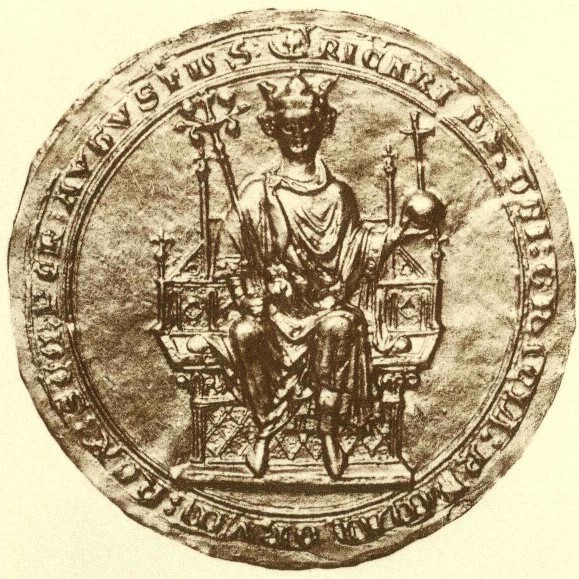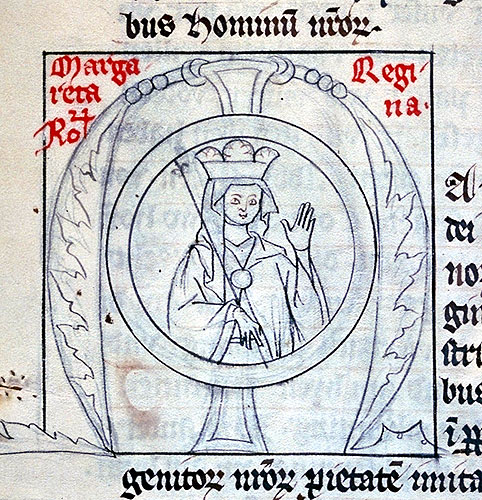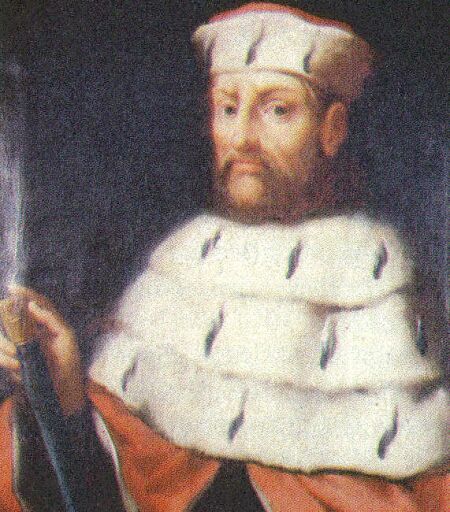|
April 1257 Imperial Election
The 1257 imperial election was a double election in which the prince-electors of the Holy Roman Empire split into factions and elected two rivals, earl Richard of Cornwall and King Alfonso X of Castile, each claiming to have been legally elected. Background The imperial elections of 1257 took place during a period known as the Great Interregnum of The Holy Roman Empire. In July 1245, Pope Innocent IV declared Frederick II, Holy Roman Emperor deposed, opening a split between the factions Guelphs and Ghibellines. This led to a period of chaos, as various figures tried to become King of the Romans. With the death of Conrad IV in 1254 and his rival claimant William of Holland in 1256, an imperial election became necessary. The following prince-electors were called: * Archbishop Elector of Mainz, *Konrad von Hochstaden, Archbishop Elector of Cologne, *Arnold II of Isenburg Archbishop Elector of Trier, * Albert I Elector of Saxony, *Louis, Elector Palatine, * Ottokar II, ... [...More Info...] [...Related Items...] OR: [Wikipedia] [Google] [Baidu] |
Elector Of Trier
The elector of Trier was one of the prince-electors of the Holy Roman Empire and, in his capacity as archbishop, administered the archdiocese of Trier. The territories of the electorate and the archdiocese were not, however, equivalent. History The transient authority of archbishops was not gained without opposition. The German kings Otto IV and Conrad IV in 1308 granted charters to the city of Trier, authorizing the jurisdiction of its archbishop, Baldwin of Luxembourg. This prince, brother of Emperor Henry VII, who ruled from 1307 to 1354, was the real founder of the power of Trier. Although his predecessor, Diether III of Nassau, had left the electorate heavily encumbered with debt, Baldwin raised it to great prosperity with the help of the emperors Henry VII, Louis the Bavarian and Charles IV, to whom he had rendered active political and military support. He enlarged his territory almost to its ultimate extent. He assumed the title of arch-chancellor of Gaul and Aries (or Bur ... [...More Info...] [...Related Items...] OR: [Wikipedia] [Google] [Baidu] |
Prince-elector
The prince-electors (german: Kurfürst pl. , cz, Kurfiřt, la, Princeps Elector), or electors for short, were the members of the electoral college that elected the emperor of the Holy Roman Empire. From the 13th century onwards, the prince-electors had the privilege of electing the monarch who would be crowned by the pope. After 1508, there were no imperial coronations and the election was sufficient. Charles V (elected in 1519) was the last emperor to be crowned (1530); his successors were elected emperors by the electoral college, each being titled "Elected Emperor of the Romans" (german: erwählter Römischer Kaiser; la, electus Romanorum imperator). The dignity of elector carried great prestige and was considered to be second only to that of king or emperor. The electors held exclusive privileges that were not shared with other princes of the Empire, and they continued to hold their original titles alongside that of elector. The heir apparent to a secular prince-ele ... [...More Info...] [...Related Items...] OR: [Wikipedia] [Google] [Baidu] |
Eleanor Of Provence
Eleanor of Provence (c. 1223 – 24/25 June 1291) was a French noblewoman who became Queen of England as the wife of King Henry III from 1236 until his death in 1272. She served as regent of England during the absence of her spouse in 1253. Although she was completely devoted to her husband and staunchly defended him against the rebel Simon de Montfort, 6th Earl of Leicester, she was very much hated by the Londoners. This was because she had brought many relatives with her to England in her retinue; these were known as "the Savoyards", and they were given influential positions in the government and realm. On one occasion, Eleanor's barge was attacked by angry Londoners who pelted her with stones, mud, pieces of paving, rotten eggs and vegetables. Eleanor had five children, including the future King Edward I of England. She also was renowned for her cleverness, skill at writing poetry, and as a leader of fashion. Early life Born in the city of Aix-en-Provence in southern Fra ... [...More Info...] [...Related Items...] OR: [Wikipedia] [Google] [Baidu] |
Louis IX
Louis IX (25 April 1214 – 25 August 1270), commonly known as Saint Louis or Louis the Saint, was King of France from 1226 to 1270, and the most illustrious of the Direct Capetians. He was crowned in Reims at the age of 12, following the death of his father Louis VIII. His mother, Blanche of Castile, ruled the kingdom as regent until he reached maturity, and then remained his valued adviser until her death. During Louis' childhood, Blanche dealt with the opposition of rebellious vassals and secured Capetian success in the Albigensian Crusade, which had started 20 years earlier. As an adult, Louis IX faced recurring conflicts with some of his realm's most powerful nobles, such as Hugh X of Lusignan and Peter of Dreux. Simultaneously, Henry III of England attempted to restore the Angevin continental possessions, but was promptly routed at the Battle of Taillebourg. Louis annexed several provinces, notably parts of Aquitaine, Maine and Provence. Louis IX enjoyed immense pre ... [...More Info...] [...Related Items...] OR: [Wikipedia] [Google] [Baidu] |
Margraviate Of Brandenburg
The Margraviate of Brandenburg (german: link=no, Markgrafschaft Brandenburg) was a major principality of the Holy Roman Empire from 1157 to 1806 that played a pivotal role in the history of Germany and Central Europe. Brandenburg developed out of the Northern March founded in the territory of the Slavic peoples, Slavic Wends. It derived one of its names from this inheritance, the March of Brandenburg (). Its ruling margraves were established as prestigious prince-electors in the Golden Bull of 1356, allowing them to vote in the election of the Holy Roman Emperor. The state thus became additionally known as Electoral Brandenburg or the Electorate of Brandenburg ( or ). The House of Hohenzollern came to the throne of Brandenburg in 1415. In 1417, Frederick I, Elector of Brandenburg, Frederick I moved its capital from Brandenburg an der Havel to Berlin. By 1535, the electorate had an area of some and a population of 400,000.Preserved SmithThe Social Background of the Reformation.19 ... [...More Info...] [...Related Items...] OR: [Wikipedia] [Google] [Baidu] |
Otto III, Margrave Of Brandenburg
Otto III, nicknamed ''the pious'' (1215 – 9 October 1267 in Brandenburg an der Havel) was Margrave of Brandenburg jointly with his elder brother John I until John died in 1266. Otto III then ruled alone, until his death, the following year. The reign of these two Ascanian margraves was characterized by an expansion of the margraviate, which annexed the remaining parts of Teltow and Barnim, the Uckermark, the Lordship of Stargard, the Lubusz Land and parts of the Neumark east of the Oder. They consolidated the position of Brandenburg within the Holy Roman Empire, which was reflected in the fact that in 1256, Otto III was a candidate to be elected King of the Germans. They founded several cities and developed the twin cities of Cölln and Berlin. They expanded the Ascanian castle in nearby Spandau and made it their preferred residence. Before their death, they divided the margraviate in a Johannine and an Ottonian part. The Ascanians were traditionally buried in the Lehnin Ab ... [...More Info...] [...Related Items...] OR: [Wikipedia] [Google] [Baidu] |
John I, Margrave Of Brandenburg
John I, Margrave of Brandenburg ( – 4 April 1266) was from 1220 until his death Margrave of Brandenburg, jointly with his brother Otto III "the Pious". The reign of these two Ascanian Margraves was characterized by an expansion of the Margraviate, which annexed the remaining parts of Teltow and Barnim, the Uckermark, the Lordship of Stargard, the Lubusz Land and parts of the Neumark east of the Oder. They consolidated the position of Brandenburg within the Holy Roman Empire, which was reflected in the fact that in 1256, Otto III was a candidate to be elected King of the Germans. They founded several cities and developed the twin cities of Cölln and Berlin. They expanded the Ascanian castle in nearby Spandau and made it their preferred residence. Before their death, they divided the Margraviate in a ''Johannine'' and an ''Ottonian'' part. The Ascanians were traditionally buried in the Lehnin Abbey in the Ottonian part of the country. In 1258, they founded a Cistercian mon ... [...More Info...] [...Related Items...] OR: [Wikipedia] [Google] [Baidu] |
Margaret Of Austria, Queen Of Bohemia
Margaret of Austria (german: Margarethe von Österreich; – 29 October 1266), a member of the House of Babenberg, was German queen from 1225 until 1235, by her first marriage with King Henry (VII), and Queen of Bohemia from 1253 to 1260, by her second marriage with King Ottokar II. Biography Margaret was the eldest daughter of Duke Leopold VI of Austria (d. 1230) and his wife Theodora Angelina, a member of the Byzantine Imperial Angelus dynasty. Since 1198 Duke Leopold, according to the Georgenberg Pact, ruled over both the duchies of Austria and Styria. His court in Vienna became known as a centre of medieval Minnesang and he also played an important rule in the Empire's policies, acting as an arbitrator in the struggle between the Hohenstaufen emperor Frederick II and Pope Gregory IX. First marriage In the Imperial City of Nuremberg, on 29 November 1225, the 21-year-old Margaret was married to the 14-year-old Henry, eldest son of Emperor Frederick II and elected King o ... [...More Info...] [...Related Items...] OR: [Wikipedia] [Google] [Baidu] |
List Of Bohemian Monarchs
The Duchy of Bohemia was established in 870 and raised to the Kingdom of Bohemia in 1198. Several Bohemian monarchs ruled as non-hereditary kings beforehand, first gaining the title in 1085. From 1004 to 1806, Bohemia was part of the Holy Roman Empire, and its ruler was an elector. During 1526–1804 the Kingdom of Bohemia, together with the other lands of the Bohemian Crown, was ruled under a personal union as part of the Habsburg monarchy. From 1804 to 1918, Bohemia was part of the Austrian Empire, which itself was part of the dual monarchy of Austria-Hungary from 1867 to 1918. Following the dissolution of the monarchy, the Bohemian lands, now also referred to as Czech lands, became part of Czechoslovakia, and they have formed today's Czech Republic since 1993. Legendary rulers of Bohemia * praotec Čech (Pater Boemus) * Lech * Krok * Libuše, duchess * Přemysl the Ploughman, her husband * Nezamysl * Mnata * Vojen * Vnislav * Křesomysl * Neklan * Hostivít Princes ... [...More Info...] [...Related Items...] OR: [Wikipedia] [Google] [Baidu] |
Ottokar II Of Bohemia
Ottokar II ( cs, Přemysl Otakar II.; , in Městec Králové, Bohemia – 26 August 1278, in Dürnkrut, Lower Austria), the Iron and Golden King, was a member of the Přemyslid dynasty who reigned as King of Bohemia from 1253 until his death in 1278. He also held the titles of Margrave of Moravia from 1247, Duke of Austria from 1251, and Duke of Styria from 1260, as well as Duke of Carinthia and landgrave of Carniola from 1269. With Ottokar's rule, the Přemyslids reached the peak of their power in the Holy Roman Empire. His expectations of the imperial crown, however, were never fulfilled. Ottokar was the second son of King Wenceslaus I of Bohemia (reigned 1230–1253). Through his mother, Kunigunde, daughter of Philip of Swabia, he was related to the Holy Roman Emperors of the Hohenstaufen dynasty, which became extinct in the male line upon the execution of King Conradin of Sicily in 1268. Named after his grandfather King Přemysl Ottokar I, he was originally educate ... [...More Info...] [...Related Items...] OR: [Wikipedia] [Google] [Baidu] |
List Of Counts Palatine Of The Rhine
The counts palatine of Lotharingia /counts palatine of the Rhine /electors of the Palatinate (german: Kurfürst von der Pfalz) ruled some part of Rhine area in the Kingdom of Germany and the Holy Roman Empire from 915 to 1803. The title was a kind of count palatine. Since 1261 (formally 1356), the title holder had become a member of the small group of prince-electors who elected the emperor of the Holy Roman Empire. Since then, the title had been also called as Elector Palatinate Counts palatine of Lotharingia 915–1085 The Palatinate emerged from the County Palatine of Lotharingia which came into existence in the 10th century. * Wigeric of Lotharingia, count of the Bidgau ( 915/916–922) * Godfrey, count of the Jülichgau (c. 940) House of Ezzonen During the 11th century, the Palatinate was dominated by the Ezzonian dynasty, which governed several counties on both banks of the Rhine. These territories were centered around Cologne-Bonn, but extended south to the rivers ... [...More Info...] [...Related Items...] OR: [Wikipedia] [Google] [Baidu] |




.png)




